 W
WA fuel cell vehicle (FCV) or fuel cell electric vehicle (FCEV) is an electric vehicle that uses a fuel cell, sometimes in combination with a small battery or supercapacitor, to power its onboard electric motor. Fuel cells in vehicles generate electricity generally using oxygen from the air and compressed hydrogen. Most fuel cell vehicles are classified as zero-emissions vehicles that emit only water and heat. As compared with internal combustion vehicles, hydrogen vehicles centralize pollutants at the site of the hydrogen production, where hydrogen is typically derived from reformed natural gas. Transporting and storing hydrogen may also create pollutants.
 W
WThe Chevrolet Equinox is a series of mid-size, later compact crossover SUV from Chevrolet, introduced in 2004 for the 2005 model year.
 W
WThe Chevrolet Sequel was a purpose-built hydrogen fuel cell-powered concept car and sport utility vehicle from Chevrolet, employing the then latest generation of General Motors' fuel cell technology.
 W
WThe Chrysler ecoVoyager is a concept car that was revealed on January 14, 2008 by Chrysler. It was introduced at the 2008 North American International Auto Show. The combination of a lithium-ion battery pack with an advanced hydrogen fuel cell was claimed to provide a range of 300 miles.
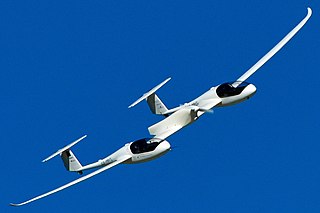 W
WHY4 is a four seat hydrogen fuel cell powered aircraft. It made its maiden flight on 29 September 2016 from Stuttgart Airport. It was designed by DLR Institute of Engineering Thermodynamics of the German Aerospace Center, based on the Taurus G4, manufactured by Pipistrel.
 W
WThe Driving America Forward Act is legislation introduced in the U.S. Senate and House in 2019 that extends the federal tax credit for electric vehicle purchases. The Senate bill was introduced on April 9, 2019 by Democratic Senators Debbie Stabenow and Gary Peters, and Republican Senators Lamar Alexander and Susan Collins. The House bill was introduced by Democratic Congressman Dan Kildee.
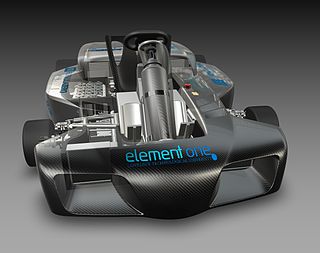 W
WElement One is Lawrence Technological University's race team from Detroit, Michigan that competed in the 2008 Formula Zero Championship, the world's first hydrogen fuel cell race series.
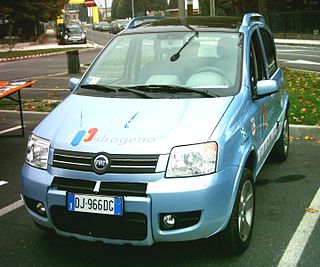 W
WThe Panda Hydrogen is a prototype fuel cell-type hydrogen vehicle based on the Fiat Panda introduced in 2006.
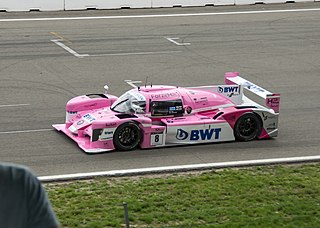 W
WForze is a student team specialised in hydrogen electric racing. It was founded at the Delft University of Technology in 2007 by Edgar van Os and has built 8 hydrogen fuel cell racing vehicles. The team's offices and workshops are located at the Schiehal in Delft, an old factory terrain in which many innovative companies have settled. In 2007, the team began designing and building go-karts with a hydrogen-electric drivetrain. With these vehicles they participated in the Formula Zero competition, hence the name ForZe. After five years the first full-size hydrogen race car was built, the Forze VI. Another three years later the project of the Forze VII began. This became the first hydrogen-electric racecar to ever participate in an official race against fossil-fueled vehicles. The latest iteration, the Forze VIII, was the first hydrogen-electric race car to ever beat petrol powered cars, and came in 2nd place at the Gamma Racing Days in Assen in 2019. Over the coming years the team wants to develop its cars in such a way that they can compete in a Le Mans Prototype endurance series.
 W
WA fuel cell forklift is a fuel cell powered industrial forklift truck used to lift and transport materials.
 W
WThe Hy-wire is a concept car from General Motors originally introduced in January 2002. The car runs on hydrogen fuel cells and uses a drive-by-wire system, meaning that the car is controlled electronically. GM asked school children to name the car, and one of them suggested "Hy-wire".
 W
WHydroGen3 was an Opel hydrogen fuel cell concept vehicle used for testing in 2006. HydroGen3's 400-kilometer (250 mi) driving range is the highest of any fuel cell vehicle approved for public roads in Japan. The five seater front-wheel driven prototype is based on the Opel Zafira compact MPV.
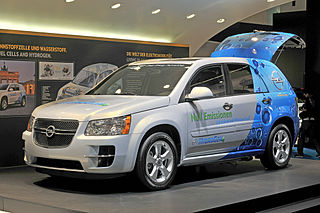 W
WHydroGen4 is the successor of the fuel cell vehicle HydroGen3, developed by General Motors/Opel and presented in 2007 at the IAA in Frankfurt, Germany. It is expected that automotive hydrogen technology, such as the type featured in the HydroGen4, may enter the early commercialization phase in the 2015 - 2020 time frame.
 W
WThe Gumpert Nathalie or RG Nathalie is a hydrogen-electric hybrid sports car running on methanol to generate hydrogen that is scheduled to enter production in 2021. It is the first car produced by the new car manufacturer RG founded by Roland Gumpert, following the bankruptcy of his company Gumpert which produced the Apollo. It is produced in 500 copies.
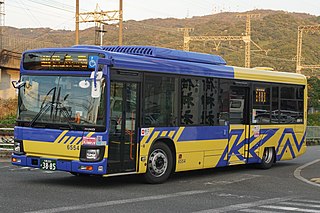 W
WThe Hino Blue Ribbon (kana:日野・ブルーリボン) is a heavy-duty single-decker bus produced by Hino Motors through the J-Bus joint-venture. The range is primarily available as city bus and tourist coach. It is built by J-Bus as either a complete bus or a bus chassis.
 W
WThe Honda Clarity is a nameplate used by Honda on alternative fuel vehicles. It was initially used only on hydrogen fuel-cell electric vehicles such as the 2008 Honda FCX Clarity, but in 2017 the nameplate was expanded to include the battery-electric Honda Clarity Electric and the plug-in hybrid electric Honda Clarity Plug-in Hybrid, in addition to the next generation Honda Clarity Fuel Cell. Clarity production ended in August 2021 with US leases for the fuel cell variant continuing through to 2022.
 W
WThe Hyundai Intrado is a mini SUV concept car made by Korean company Hyundai. It is powered by a hydrogen fuel cell powertrain with a 36-kWH Lithium-ion battery. It has a range of about 370 mi (600 km) on a single fill up.
 W
WThe Hyundai ix35 FCEV or Tucson FCEV is a hydrogen fuel cell electric vehicle developed by Hyundai. The model is a left-hand drive only conversion to the SUV platform it is based on and was the first of its type to be mass-produced and sold commercially in the world. Different versions are known, the previous version was based on the Hyundai Tucson FCEV, and the upcoming model is based on the current ix35 FCEV. The first generation was introduced in 2001, with the Hyundai Santa Fe FCEV, and had a range of 100 miles (160 km), with a top speed of 78 mph (126 km/h).
 W
WThe Hyundai Nexo is a hydrogen fuel cell powered crossover SUV that was revealed at the 2018 Consumer Electronics Show on January 8, 2018. Replacing the Hyundai Tucson FCEV, the Nexo is the flagship for Hyundai's "eco car" portfolio.
 W
WHyzon Motors is a supplier of zero-emissions hydrogen fuel cell powered commercial vehicles, including heavy duty trucks, buses and coaches. Hyzon was established as a new business of Horizon Fuel Cell Technologies.
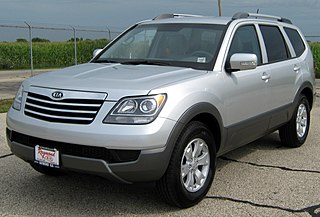 W
WThe Kia Mohave, marketed in North America and China as the Kia Borrego, is a sport utility vehicle (SUV) manufactured by the South Korean manufacturer Kia. The vehicle debuted in 2008 in the Korean and U.S. markets. The Kia Borrego is named after the Anza-Borrego Desert State Park in California; Borrego means "bighorned sheep" which can be found in the state park.
 W
WThe F-Cell is a hydrogen fuel cell electric vehicle developed by Daimler AG. Two different versions are known - the previous version was based on the Mercedes-Benz A-Class, and the new model is based on the Mercedes-Benz B-Class. The first generation F-Cell was introduced in 2002, and had a range of 100 mi (161 km), with a top speed of 82 mph (132 km/h). The current B-Class F-CELL has a more powerful electric engine rated at 100 kW (134 hp), and a range of about 250 mi (402 km). This improvement in range is due in part to the B-Class's greater space for holding tanks of compressed hydrogen, higher storage pressure, as well as fuel cell technology advances. Both cars have made use of a "sandwich" design concept, aimed at maximizing room for both passengers and the propulsion components. The fuel cell is a proton exchange membrane fuel cell (PEMFC), designed by the Automotive Fuel Cell Cooperation (AFCC) Corporation.
 W
WThe Mercedes-Benz F-Cell Roadster is a concept car produced by the German car company Mercedes-Benz. During April 2009, the concept car has traveled the Bertha Benz Memorial Route thus celebrating the exploits of Mrs. Bertha Benz in 1888.
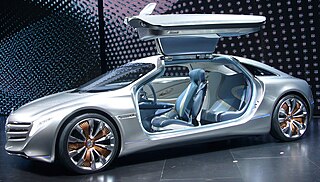 W
WThe Mercedes-Benz F125 is an electrically driven, hydrogen fuel cell concept car unveiled at the 2011 Frankfurt Motor Show. It is named 125 to celebrate the 125th anniversary of Mercedes-Benz.
 W
WThe Morgan LIFEcar was originally a fuel cell-powered electric vehicle project undertaken by Morgan Motor Company and startup company Riversimple. The goal of LIFEcar was a sports car that would be environmentally responsible, and deliver impressive performance. Research and development was backed by QinetiQ, a British defence technology firm, as well as several universities, including Cranfield University and the University of Oxford, and government grants. The project abandoned the fuel-cell architecture in favour of a hybrid approach with a 15-mile electric range.
 W
WPac-Car II was developed as a student project at ETH Zürich. Based on a group of students and an experienced team leader, the goal was to build a vehicle that uses as little fuel as possible. By using hydrogen fuel-cell, developed at ETH/PSI, as power source, pure water is the car's only emission. Clean mobility completed therefore the educational and energy saving aspects of the project.
 W
WThe Riversimple Urban Car is a conceptual open source hydrogen fuel cell vehicle that was proposed by Hugo Spowers' company, Riversimple, in 2009. Their latest model, the Rasa, was unveiled on 17 February 2016.
 W
WThe Toyota FCHV is a current hybrid hydrogen fuel cell vehicle development programme of the Toyota Motor Corporation, which was leased to a limited number of drivers in the United States and Japan beginning in 2002. "FCHV" stands for "Fuel Cell Hybrid Vehicle". A number of prototypes have been produced, up to the latest FCHV-adv ("advanced").
 W
WThe Toyota Mirai is a mid-size hydrogen fuel cell vehicle (FCV) manufactured by Toyota, and represents one of the first FCV automobiles to be mass-produced and sold commercially. The Mirai was unveiled at the November 2014 Los Angeles Auto Show. As of December 2019, global sales totalled 10,250 Mirais. The top-selling markets were the U.S. with 6,200 units, Japan with 3,500 and Europe with 640. As of October 2021, US and Canada sales totalled 8,902 and 158 units respectively.
 W
WThe Volkswagen Up is a city car, part of the Volkswagen Group New Small Family (NSF) series of models, unveiled at the 2011 International Motor Show Germany (IAA). Production of the Up started in December 2011 at the Volkswagen Plant in Bratislava, Slovakia. A battery electric version, called E-up, was launched in autumn 2013. The SEAT Mii and Škoda Citigo are rebadged versions of the Up, with slightly different front and rear fascias, and are manufactured in the same factory.